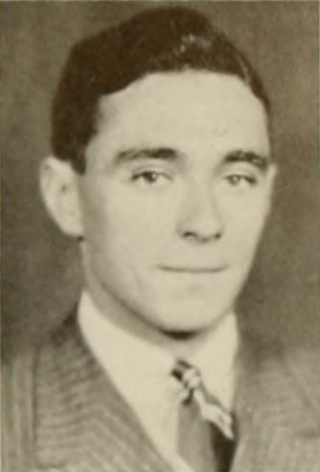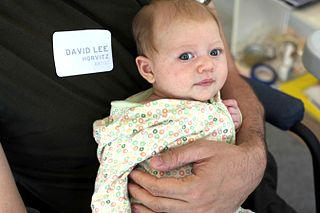Related Research Articles

Developmental psychology is the scientific study of how and why humans grow, change, and adapt across the course of their lives. Originally concerned with infants and children, the field has expanded to include adolescence, adult development, aging, and the entire lifespan. Developmental psychologists aim to explain how thinking, feeling, and behaviors change throughout life. This field examines change across three major dimensions, which are physical development, cognitive development, and social emotional development. Within these three dimensions are a broad range of topics including motor skills, executive functions, moral understanding, language acquisition, social change, personality, emotional development, self-concept, and identity formation.

Jerome Seymour Bruner was an American psychologist who made significant contributions to human cognitive psychology and cognitive learning theory in educational psychology. Bruner was a senior research fellow at the New York University School of Law. He received a BA in 1937 from Duke University and a PhD from Harvard University in 1941. He taught and did research at Harvard University, the University of Oxford, and New York University. A Review of General Psychology survey, published in 2002, ranked Bruner as the 28th most cited psychologist of the 20th century.
Object permanence is the understanding that whether an object can be sensed has no effect on whether it continues to exist. This is a fundamental concept studied in the field of developmental psychology, the subfield of psychology that addresses the development of young children's social and mental capacities. There is not yet scientific consensus on when the understanding of object permanence emerges in human development.
Linda B. Smith is an American developmental psychologist internationally recognized for her theoretical and empirical contributions to developmental psychology and cognitive science, proposing, through theoretical and empirical studies, a new way of understanding developmental processes. Smith's works are groundbreaking and illuminating for the field of perception, action, language, and categorization, showing the unique flexibility found in human behavior. She has shown how perception and action are ways of obtaining knowledge for cognitive development and word learning.
Rachel Barr is a professor at Georgetown University. She is currently the co-director of graduate studies in the Department of Psychology at Georgetown University. Her research focuses on understanding the learning and memory mechanisms that develop during infancy. Because infants are preverbal, her techniques rely on imitation and learning methods to find out what infants have learned and how well and how long they remember it. Her previous research has focused on how infants pick up information from different media sources, television, siblings, adults, and different contexts. Most recently, Barr's studies focus on factors that might enhance infant learning from television.

Infant vision concerns the development of visual ability in human infants from birth through the first years of life. The aspects of human vision which develop following birth include visual acuity, tracking, color perception, depth perception, and object recognition.
Preferential looking is an experimental method in developmental psychology used to gain insight into the young mind/brain. The method as used today was developed by the developmental psychologist Robert L. Fantz in the 1960s.
Oliver John Braddick, was a British developmental psychologist who researched infant visual perception. He frequently collaborated with his wife Janette Atkinson.
Infant cognitive development is the first stage of human cognitive development, in the youngest children. The academic field of infant cognitive development studies of how psychological processes involved in thinking and knowing develop in young children. Information is acquired in a number of ways including through sight, sound, touch, taste, smell and language, all of which require processing by our cognitive system. However, cognition begins through social bonds between children and caregivers, which gradually increase through the essential motive force of Shared intentionality. The notion of Shared intentionality describes unaware processes during social learning at the onset of life when organisms in the simple reflexes substage of the sensorimotor stage of cognitive development do not maintain communication via the sensory system.
Roberta "Bobby Lou" Klatzky is a Professor of Psychology at Carnegie Mellon University (CMU). She specializes in human perception and cognition, particularly relating to visual and non-visual perception and representation of space and geometric shapes. Klatzky received a B.A. in mathematics from the University of Michigan in 1968 and a Ph.D. in psychology from Stanford University in 1972. She has done extensive research on human haptic and visual object recognition, navigation under visual and nonvisual guidance, and perceptually guided action.
Haptic memory is the form of sensory memory specific to touch stimuli. Haptic memory is used regularly when assessing the necessary forces for gripping and interacting with familiar objects. It may also influence one's interactions with novel objects of an apparently similar size and density. Similar to visual iconic memory, traces of haptically acquired information are short lived and prone to decay after approximately two seconds. Haptic memory is best for stimuli applied to areas of the skin that are more sensitive to touch. Haptics involves at least two subsystems; cutaneous, or everything skin related, and kinesthetic, or joint angle and the relative location of body. Haptics generally involves active, manual examination and is quite capable of processing physical traits of objects and surfaces.
Fine motor skill is the coordination of small muscles in movement with the eyes, hands and fingers. The complex levels of manual dexterity that humans exhibit can be related to the nervous system. Fine motor skills aid in the growth of intelligence and develop continuously throughout the stages of human development.
Sandra Trehub was a Canadian psychologist recognized for her research in the field of music psychology. She held the position of Professor Emeritus at the University of Toronto.
Daphne Maurer is a Canadian developmental psychologist and professor emeritus in the Department of Psychology, Neuroscience & Behaviour at McMaster University. She is known for her work on the development of visual perception in humans, starting in infancy.
Kelly S. Mix is an American developmental psychologist known for her research on the development of numerical concepts and their origins in infancy and toddlerhood. She is professor and chair of the Department of Human Development and Quantitative Methodology at the University of Maryland. Mix was awarded the Boyd McCandless Early Career Award in 2002 for her innovative research on the early emergence of numerocity. Her co-authored book Quantitative Development in Infancy and Early Childhood, with Janellen Huttenlocher and Susan Cohen Levine, provides an overview of the early development of quantitative reasoning and mathematical concepts. Her co-edited book The Spatial Foundations of Language and Cognition, with Linda B. Smith and Michael Gasser, examines the role of space in structuring human cognition.
Boundary extension (BE) is a cognitive psychology phenomenon and an error of commission in which people remember more of a scene or boundary than was originally present in the original picture. Boundary extension is typically studied using a recognition memory test where participants are shown a series of photos and then shown new photos that are either the same or have been altered in some way and asked if they are the same or different from the original photos. For example, people are typically presented with either a close-angle photo, which shows less of a picture scene, or a wide-angle photo, which shows more of a picture scene, during the study phase where the participant tries to memorize the picture and then a close or wide-angle photo during the test phase where the participant is tested on the original photos. Consequently, there are four different viewing conditions that people could experience the photos in: close-close, wide-wide, close-wide, or wide-close. If the participants respond that the new photos with more background are the same as the original photos, then they are demonstrating boundary extension because they are extending the boundary of the original photo.
Rachel Keen is a developmental psychologist known for her research on infant cognitive development, auditory development, and motor control. She is Professor Emeritus of Psychology at the University of Virginia.
Lauren Bernstein Adamson was a developmental psychologist known for her research on communicative development, parent-child interaction, and joint attention in infants with typical and atypical developmental trajectories. She was a Regents' Professor Emerita of Psychology at Georgia State University.

Eleanor Jack Gibson was an American psychologist who focused on reading development and perceptual learning in infants. Gibson began her career at Smith College as an instructor in 1932, publishing her first works on research conducted as an undergraduate student. Gibson was able to circumvent the many obstacles she faced due to the Great Depression and gender discrimination, by finding research opportunities that she could meld with her own interests. Gibson, with her husband James J. Gibson, created the Gibsonian ecological theory of development, which emphasized how important perception was because it allows humans to adapt to their environments. Perhaps her most well-known contribution to psychology was the "visual cliff," which studied depth perception in both human and animal species, leading to a new understanding of perceptual development in infants. Gibson was elected to the National Academy of Sciences in 1971, the National Academy of Education in 1972, and to the American Academy of Arts and Sciences in 1977. In 1992, she was awarded the National Medal of Science.
Lorraine E. Bahrick is a developmental psychologist known for her research on intermodal perception and effects of inter-sensory redundancy on learning in infancy and early childhood. Her work in these areas involves investigating how the integration of information from various sensory modalities, such as vision, hearing, and touch, contributes to the cognitive, perceptual, and social development of infants and children. She also explores how the redundancy or overlap of sensory information, influences these developmental processes. She is Distinguished University Professor of Psychology at Florida International University and the Director of Infant Development Lab.
References
- ↑ McLinden, Mike; McCall, Stephen (2016-04-29). Learning Through Touch: Supporting Children with Visual Impairments and Additional Difficulties. Routledge. ISBN 9781136609541.
- ↑ Benson, Janette B.; Haith, Marshall M. (2010-05-22). Language, Memory, and Cognition in Infancy and Early Childhood. Academic Press. ISBN 9780123785763.
- ↑ "Resolution on the Retirement of Professor Emily Bushnell" (PDF). Tufts University. 2013. Retrieved 2017-10-04.
- ↑ "Tufts University, Department of Psychology: People". Tufts University . Retrieved 2017-10-04.